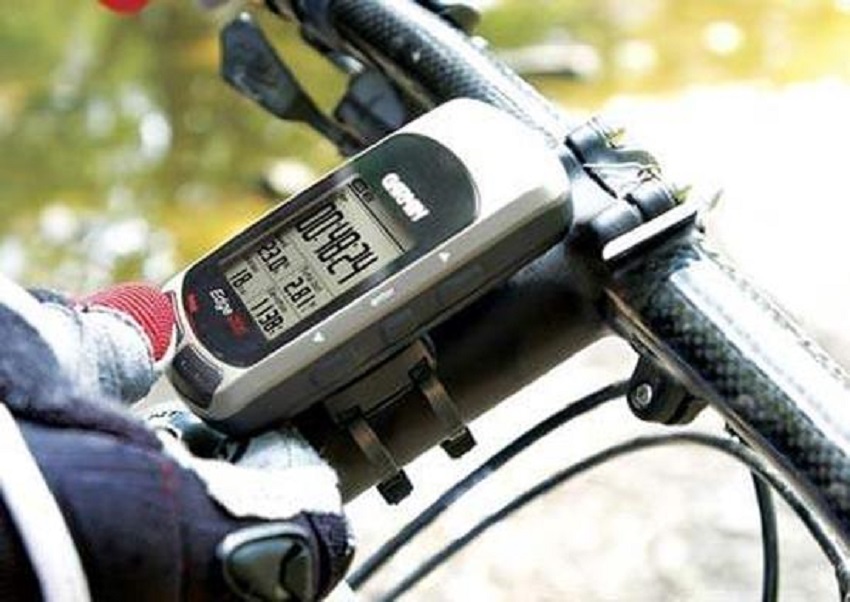
31 Dec How to choose a bike computer?
Cycling in the information age means that you have the opportunity to have more data than ever about your performance on the bike. Recording this data will help you get the most out of your training sessions to become a better cyclist.
Getting the most out of your training often involves sticking to a schedule and setting goals that are consistent and that help you improve as a cyclist. Not all of us who enjoy cycling are looking for the same performance and therefore need to record different information. Also, check out the best fat bikes under $500.
Whether you’re an avid mountain biker who needs a bike GPS that lets you know the distance, time, and altitude, or a long-distance road rider, these devices are great pieces of gear for your bike. And while it may seem that only tech-savvy people can understand, these simple considerations can make your selection process easier.
What metrics do you want to record with the cycling computer?
The first thing you need to determine to get the best bike computer is to recognize which metrics are really important to you. Second, why do you want to register them? And all this is summed up in what kind of cyclist you are or what kind of cycling you practice.
In which case, we can start from the following examples:
Casual riders will generally only want to know basic metrics, such as distance, speed, and time.
Enthusiastic cyclists, those who ride daily, often want more information, such as trip distance, total trip, calories burned, average speed, and top speed.
Competitive cyclists may prefer all of the above in addition to cadence, heart rate, elevation, total climb, and more.
How much do you want to invest in the computer for your bike?
The cost of a cycling computer is closely related to the technology with which it is equipped and consequently, the number of metrics it can record, either relying on the use of external devices and sensors, which have a cost or extra, or those that it can process on its own.
The most basic computers will be able to give you elementary information about how fast you are going (speed), how far you have traveled (distance) and how long you have been riding (travel time). These are the most accessible. However, in many cases, you will have the record exclusively on the computer, you will not be able to export or share it. So if you want to share your activities in Apps like STRAVA or komoot, it will be better to consider something a little more sophisticated.
When you are a cyclist attached to a training program or just want to improve your skills on the bike, you will need to get more information about your rides to help you stick to your training more thoroughly or improve your times.
So it will be necessary to spend more money to get the device that gives you all those metrics you need to know. To record those metrics, a device that allows you to export and the process is the most desirable.
Consider that a device that allows you to record more metrics will require external sensors for some of them. For example, to record your heart rate, you will need to combine a heart rate monitor with your bike computer.
The type of journey you take will determine the characteristics and metrics to be recorded. Today, the use of GPS to obtain this information is the most common. There are computers with integrated GPS and others that take advantage of your mobile phone. Even for many people, the cell phone can be enough to record their activities on the bike.
It is solely up to you to decide what functions you want and therefore how much you are willing to spend on any of the cycling computers currently on the market.
Types of bike computers
Casual cyclists can choose a wired bike computer and a basic magnetic sensor. This will meet their basic demands for metrics such as real-time display of distance and speed, allowing you to have a rough understanding of your bike trip.
Cycling Computers without GPS
There are a bit more sophisticated cycling computers, which offer you connectivity with external sensors without having to invest too much money. These types of devices do not have an integrated GPS. However, they can connect to your cell phone and use its GPS.
These types of devices already give you the opportunity to record metrics and share data with other applications or social networks.
It is true that with a smartphone that has the STRAVA application or a similar one, you will be able to record your activities and view metrics in real-time, such as distance traveled, speed, etc. The smartphone can be great for those who take short trips. However, you have to take certain considerations.
Some of the drawbacks of using a cell phone as your cycling computer are battery drain and the cost in case you damage it. GPS consumes more power and when riding a bike, it is always a good idea to have enough battery in case of emergencies. In case of a fall or simply the vibration of the road can cause the smartphone to fly off and suffer some damage. This can result in a hefty expense!
Cycling Computers with Integrated GPS
Without a doubt, GPS models are the complete option because of the number of metrics it includes, such as satellite tracking of your position in real-time, elevation, speed, distance, slope, etc. The vast majority of these devices give you the ability to preload routes to navigate and new routes with ease.
This type of device allows you to connect with heart rate sensors, power sensors, and more, which multiplies and gives more precision to the metrics that you can access.
Now that you know what to look for in a bicycle computer and taking into account the wide variety on the market with so many different functions each, we invite you to consult our selection of the best GPS for cycling. Know the details of each of the devices and find one that suits you and your cycling style.

Sorry, the comment form is closed at this time.